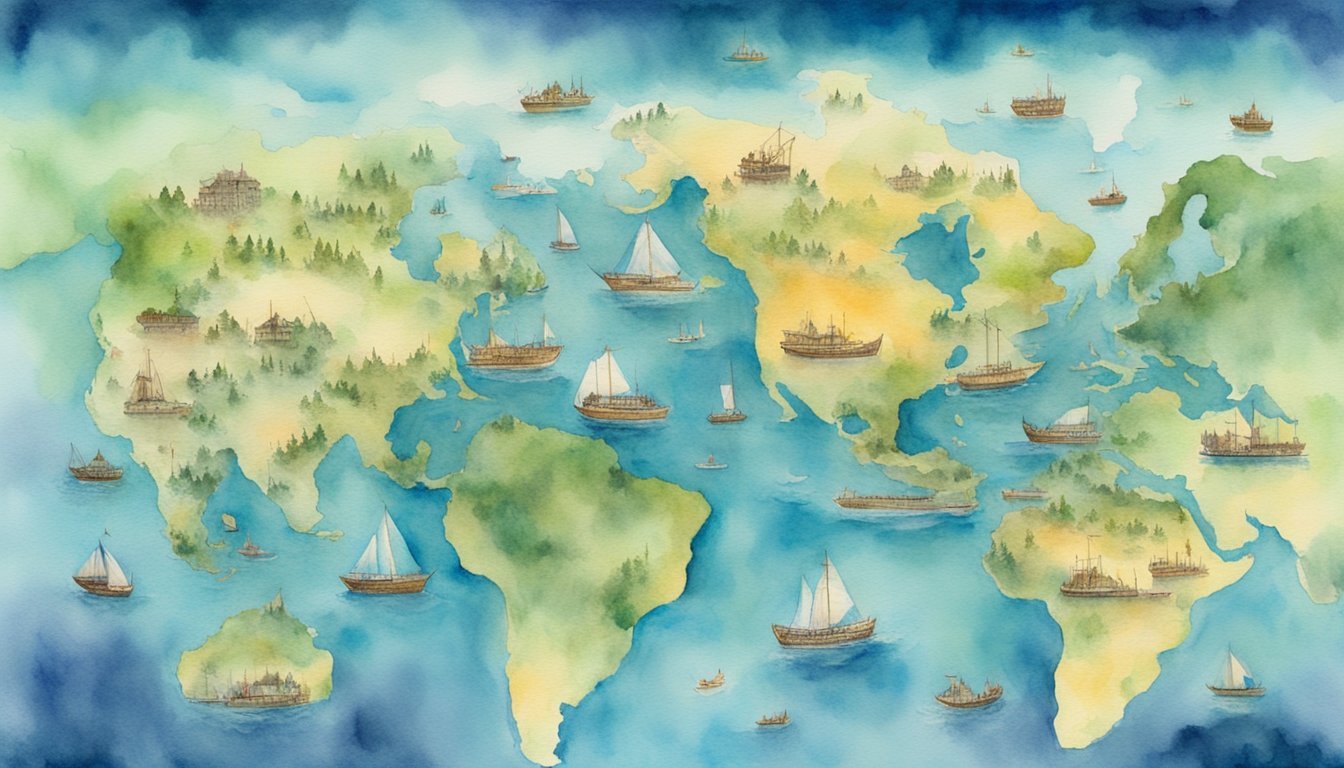Origins and Early Migrations
Human migration’s history is a complex journey marked by significant events that shaped the course of our species. This section delves into the initial chapters of the human saga, demonstrating how our ancestors ventured from their African homeland, adapted to new environments, and populated the earth.
Out of Africa Theory
The Out of Africa theory posits that modern humans (Homo sapiens) originated in Africa. Evidence from mitochondrial DNA suggests a common maternal ancestor, often referred to as “Mitochondrial Eve,” lived in Africa around 200,000 years ago. This theory is further supported by ancient DNA analyses which chart the migration paths from Africa to other continents. The first major wave of human migration saw groups crossing the Red Sea or Arabian Peninsula.
Homo Erectus Expansion
Prior to the journey of Homo sapiens, another hominid, Homo erectus, had already left Africa. About 1.8 million years ago, these early humans moved into areas that are now the Middle East and Asia, with evidence of their presence found in places like China and Indonesia. Fossils and stone tools are pivotal proof of Homo erectus’ ability to adapt to diverse landscapes, marking the earliest known human migration.
Advent of Homo Sapiens
Around 100,000 years ago, Homo sapiens began to spread beyond Africa, migrating into the Middle East, and further into Asia and Europe. The Genographic Project, using markers on Y chromosomes and mutations in mitochondrial DNA, helps trace these movements and the subsequent adaptations that occurred. For example, adaptation to different climates is evident from changes in skin pigmentation and body form, as visible in the diverse populations inhabiting the globe today.
Significant migrations during the Paleolithic and Neolithic times included movements across the Mediterranean, through Southern Africa, and eventually into new territories, as the Indian Ocean presented new avenues for travel and the shifting landscape offered opportunity and challenge.
Global Dispersal and Settling Patterns

The history of human migration reveals a dynamic saga of how modern humans and their ancestors navigated diverse terrains, climates, and obstacles to inhabit virtually all corners of the globe.
Peopling of Eurasia
Modern humans began to spread out of Africa into Eurasia roughly 80,000 years ago. Archaeological and genetic evidence suggest that these early humans moved into Asia and Europe, encountering and interbreeding with Neanderthals. This has been substantiated by Neanderthal DNA present in the genome of contemporary humans outside of Africa. In areas like Germany and Pakistan, tools and fossil records indicate a solid human presence that capitalized on the advantages of diverse climates and abundant resources for hunting.
Migration to the Americas
The migration to the Americas is characterized by the use of a land bridge that once connected Asia and North America. Between 15,000 and 23,000 years ago, during a time when the climate fostered lower sea levels, humans crossed into the Americas. There, environmental challenges were met with innovation in hunting technologies, allowing for the successful colonization and settlement of a diverse range of habitats. Over time, these populations would develop distinct linguistic and cultural patterns.
Oceanic and Island Settlements
The settlement of Oceania and other remote islands represents some of the most daring human migrations. By at least 40,000 years ago, modern humans reached Australia, requiring seagoing capabilities to cross significant stretches of ocean. Later, island settlements across the Pacific demonstrate not only a noteworthy adaptability to isolated environments but also human ingenuity in developing seafaring technologies and navigating by the stars. Notable is the settlement of remote islands such as those in Indonesia and near China, which indicated advanced planning and a deep understanding of seasonal winds and currents.

